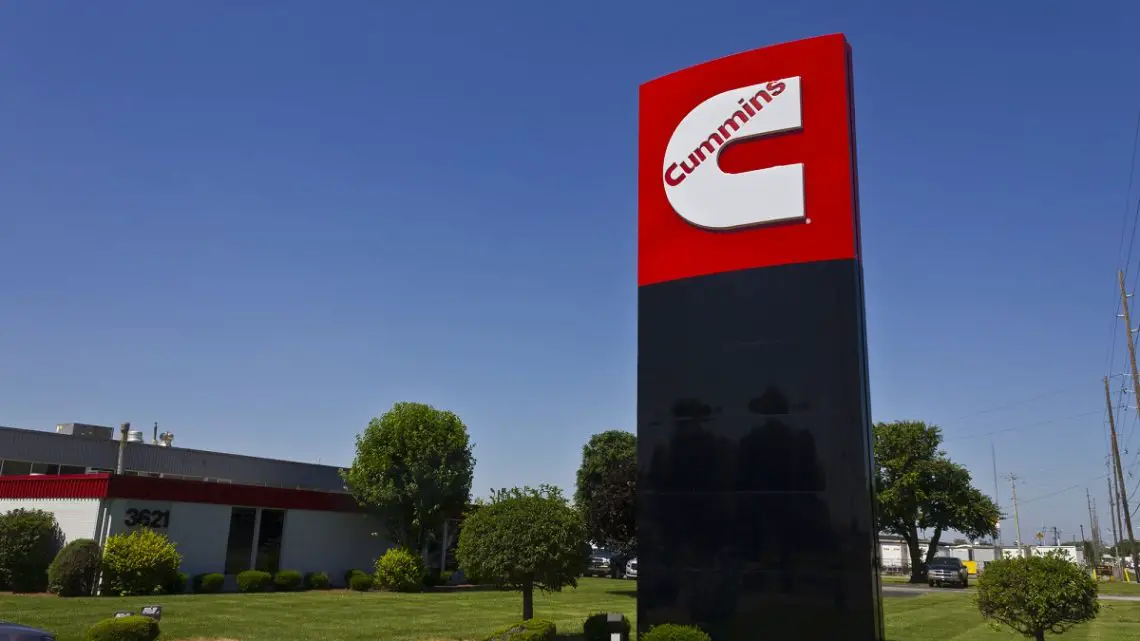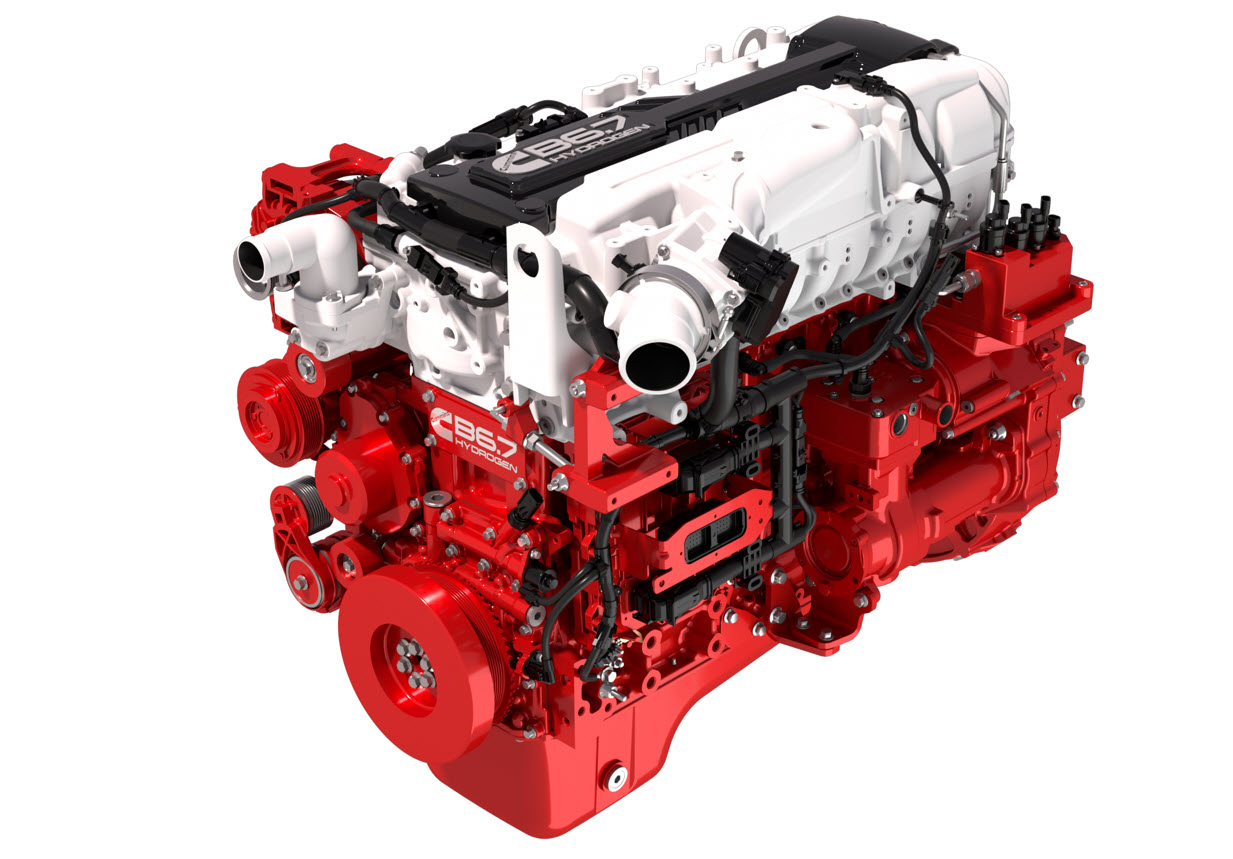
Inside Cummins $150M Move Indirectly Powering Hydrogen EVs
July 31, 2024Cummins Inc., a global leader in power solutions, is making headlines with its innovative 15-liter hydrogen engine, which promises to be a game-changer for the transport industry. This significant development comes on the heels of the company receiving a $75 million grant from the Department of Energy and an additional $75 million investment of its own. These funds are earmarked to transform the Columbus Engine Plant (CEP) into a cutting-edge facility for zero-emissions components and electric powertrain systems.
Allocation of Funds
Hydrogen Fuel News: Allocation of Funds
We asked Cummins about the allocation of funds and how much of the $150 million would be going to hydrogen, and they clarified that none of these funds will directly support the manufacturing of hydrogen technologies at the CEP. While the $150 million investment will fuel the expansion of Accelera by Cummins’ battery, electric powertrain system, and electrified component manufacturing, it is important to note that the company does not currently produce hydrogen products at this facility. A company representative stated that while these products can be utilized in hydrogen fuel cell electric vehicles, the funding will not directly support the manufacturing of hydrogen technologies.
With this said, the company still remains on track for their hydrogen engine. As we next look at the ongoing development of their hydrogen combustion engine, it’s clear that the company is still very committed to advancing hydrogen technology.
Zero-Emission Strategy Focus
Cummins is committed to a diverse portfolio of zero-emission technologies, with a significant focus on both electric and hydrogen solutions. Accelera by Cummins, the company’s zero-emissions business segment, offers a range of products, including batteries, fuel cells, e-axles, traction systems, and electrolyzers. During an Analyst Day with investors earlier this year, Cummins projected Accelera’s revenue to reach between $3 billion and $9 billion by 2030. Of this, $1 billion to $5 billion is expected to come from the electrolyzer business, while $2 billion to $4 billion will be attributed to eMobility, encompassing electrified products and hydrogen fuel cells.
Hydrogen Combustion Engine Emission Goals
Cummins is confident that its hydrogen combustion engine will meet the upcoming emission goals set by regulatory bodies in both the United States and Europe. The European Commission provides a pathway for Zero-Emission Vehicle (ZEV) classification for hydrogen internal combustion engines (H2 ICE), while the USEPA classifies H2 ICE as a Zero-Carbon technology under the GHG Phase 3 regulation.
The Revolutionary 15-Liter Hydrogen Engine
Their new 15-liter hydrogen engine is a remarkable advancement in the transport industry. This engine replaces the conventional diesel engine with a more environmentally friendly alternative that uses hydrogen as fuel. The hydrogen is stored in a tank, which propels the engine with zero emissions. The only byproduct of this process is water vapor, making it a truly zero-emission solution.
Key Features of 15-Liter Hydrogen Combustion Engine
The 15-liter hydrogen combustion engine boasts impressive specifications:
- Torque: Reaches up to 1,800 Nm, ensuring excellent performance and towing capacity.
- Fuel Efficiency: Offers up to 35% better fuel economy compared to traditional diesel engines, reducing both fuel consumption and operational costs.
- Fuel-Agnostic Platform: Engine components below the head gasket remain consistent across various fuel types, while distinct components above the head gasket are customized for each specific fuel.
- Production Timeline: Full production of the hydrogen combustion engine is anticipated to commence in 2027.
- Early Performance Metrics: Key early performance figures include over 810 ft-lbs of torque and 290 horsepower from the medium-duty variant of the engine.
- Expansion of Product Line: Plans are underway for the production of additional hydrogen internal combustion engines in both 15-liter and 6.7-liter displacements, demonstrating a commitment to diverse solutions that cater to market demands.
- Environmental Impact: This innovative approach is positioned to significantly reduce greenhouse gas emissions over the next decade, making hydrogen internal combustion engines a practical, familiar, and efficient choice for a wide range of applications.
CORRECTION AND UPDATE: Cummins’ 15 liter engine featured in this article is a hydrogen combustion engine, not a fuel cell EV. Although, Cummins does make and sell fuel cells, parts and a fourth generation fuel cell engine this is designed for medium and heavy duty trucks and buses.
Industry Impact and Competitive Positioning
Their hydrogen engine stands out in a market dominated by electric vehicle (EV) manufacturers like Tesla. While Tesla focuses on battery-electric solutions, Cummins offers a viable alternative with its hydrogen engine, which can be refueled in minutes and provides a range comparable to traditional diesel engines. This makes it particularly attractive for commercial and industrial applications, where range, weight and refueling time are critical factors.
A New Chapter in Combustion Engine Innovation
Cummins’ hydrogen engine stands as a beacon of innovation within the realm of internal combustion technology. Built on the company’s groundbreaking fuel-agnostic platform, this engine maintains uniformity below the head gasket while adapting components above it to suit various fuel types. Designed to pair with clean, zero-carbon hydrogen fuel, it promises a sustainable future in line with Cummins’ aggressive PLANET 2050 targets for zero emissions.
Following successful initial tests that have already met power and torque benchmarks, Cummins is poised to begin production of both 15-liter and 6.7-liter hydrogen engines by 2027. These engines are set to cater to diverse market needs, delivering a cost-effective, familiar, and reliable solution for reducing greenhouse gas emissions in heavy-duty and medium-duty applications alike.
America’s Commitment to Future Mobility
The United States is unwavering in its commitment to developing new prototypes for future mobility, despite stiff competition from countries like China and Japan. The goal is for the hydrogen engine to succeed where EVs have struggled, supported by a strategic concept and a network of hydrogen refueling stations that the White House has pledged to develop through historic subsidies.
Conclusion
Cummins hydrogen engine is poised to revolutionize the transport industry, offering a powerful, efficient, and environmentally friendly alternative to traditional diesel engines. With significant investments in zero-emission technologies and a commitment to innovation, Cummins is positioning itself as a leader in sustainable transportation. This groundbreaking engine not only promises to meet stringent emission goals but also sets a new standard for performance and efficiency in the industry.



 With over 15 years of reporting hydrogen news, we are your premier source for the latest updates and insights in hydrogen and renewable energy.
With over 15 years of reporting hydrogen news, we are your premier source for the latest updates and insights in hydrogen and renewable energy.
This makes little sense. It claims to be a H2 ICE engine but uses a fuel cell to power the engine?